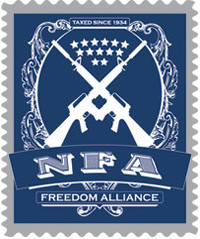Common Myths and Misconceptions
Unfortunately the National Firearms Act is widely misunderstood which leads to many misconceptions and outright falsehoods being spread like fact.
The National Firearms Act of 1934 was introduced in response to the rampant criminal activity during Prohibition and events like the Saint Valentine's Day Massacre in 1929 with the intended purpose of regulating machine guns, rifles and shotguns with barrels shorter than 18", and silencers by imposing a $200 tax on the purchase of them. At the time $200 was prohibitively expensive (equivelent to over $3500 in 2016) but the tax has remained the same making it much easier for people to afford today. Originally all handguns were to be regulated as well but eventually they were excluded from the law before it passed and the minimum length for rifles changed to 16" rather than 18".
The process of legal ownership of NFA regulated items involves the buyer filing an application with the government effectively asking for permission and paying the $200 tax (or $5 in the case of and AOW). These applications are processed by the NFA Branch of the Bureau of Alcohol Tobacco Firearms and Explosives (BATFE or simply ATF) where a background check is performed to ensure the applicant is not prohibited from owning the item and on approval a stamp is placed on the form and returned to the person who filed it. This is where Stamp Collectors Anonymous gets its name.
Only with an approved form in hand can the buyer then take possession of their purchase. That's right, from the time you make the purchase the item must remain in the seller's possession until your form is approved. Doesn't really sound like a big deal until you find out that the process takes anywhere from 4 to 12 months depending on the backlog of forms pending at any given time.





